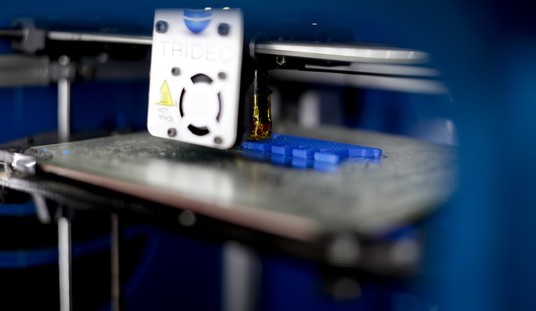When a suspect is killed via gunfire in the commission of a crime by law enforcement officers or “regular Joe” citizens, we often here the same question repeated by the deceased suspect’s family members and friends.
“Why didn’t they just shoot him in the leg?”
We heard people ask this question in the Michael Brown shooting, the death of Tamir Rice, and more recently in the death of Robert “LaVoy” Finicum.
Occasionally we’ll hear a slight variation of that, asking why the suspect wasn’t shot in the arm, but they’re both ways of asking police to shoot at the extremities of the body, in the mistaken belief that shooting someone in the arm or leg is somehow guaranteed to be less lethal.
That’s simply not true.

Do you see all the major veins and arteries in the arms and legs in the photo above? A direct bullet strike to any one of those is going to create a tremendous amount of blood loss, and a direct hit isn’t the only risk. You’ll note that those veins and arteries necessarily run near major bones. If those bones are hit by bullets, the bone and bullet fragments may become shrapnel, like a hand grenade going off in the body. Those fragments can rip veins and arteries to shreds.

Getting shot in the leg or arm can be just as deadly as a shot to the torso as bullets fragment or change directions after hitting tissue and bone. Either can create injuries which kill in seconds to minutes.
If you have a particularly strong stomach, there is edited video of a man being shot in the center of his upper thigh with a G3-style .308 rifle that has been posted to YouTube. He’s shot in the right thigh 11 seconds into this video (warning: extremely graphic). In the unedited, full length version (which you simply don’t need to see) he dies in roughly three minutes. The same could happen to upper arm or shoulder shots… the same “flesh wounds” that Hollywood movie and television stars all but brush off as no big deal, and it can happen just as quickly with a handgun round as a rifle round. Sadly, we’ve covered several fatal negligent discharges in recent years where someone shot themselves in the femoral artery with their carry guns. One man never made it out of his car. The other made it from his living room couch to his bedroom before passing out (and eventually dying) from blood loss.
Let’s be very clear on this: when a human being is shot in the arm or leg, they could very easily die from the wound, and there is no way to easily predict what the bullet is going to do once it hits a human body.
The second reason that we don’t shoot at arms and legs is a based on the facts that:
- arms and legs tend to be smaller targets than a torso, and in more motion than a torso (it’s harder to hit a smaller, rapidly moving target like running legs or swinging arms)
- Arms and legs are not as thick or dense as torsos.
- Defensive handgun bullets are designed to penetrate roughly 12″-18″ in people.
These three facts add up to shots at arms or legs being much more dangerous to innocent bystanders downrange than torso shots.
Officers and civilians shooting at arms and legs are more likely to miss the targeted individual completely, and even if they make a hit on arms and legs, these smaller parts of the body are unlikely to stop a bullet. These slowed bullets are still quite lethal, as a recent shooting in Chicago proved.
Quintonio LeGrier allegedly swung a baseball bat at Chicago Police officer Robert Rialmo twice the day after Christmas, missing him by inches. When LeGrier cocked the improvised weapon back for a third swing, Rialmo drew his weapon and quickly fired it eight times from retention. One of the bullets passed through LeGrier and hit neighbor Bettie Jones, killing her.
Law enforcement officers and properly-trained defensive firearms students do not “shoot them in the leg” because:
- You are only legally justified in shooting at people who are immediate lethal force threats, and the most effective was to stop such a threat (and hopefully fire the fewest rounds) is a center mass hit.
- Arms and legs are harder targets to hit.
- Arms and legs won’t reliably stop bullets, and so shots at them pose a greater risk of hitting innocent bystanders.
- Arm and leg shots can be just as lethal as a shot to the chest, depending on what the bullet hits and how it reacts to hitting the body.
No competently-trained shooter will aim at an arm or a leg, knowing that that such shots have a lower success rate, have a greater chance of missing or over-penetrating the target, are more of a threat to innocent bystanders, and can be just as deadly.
Please stop asking people to take shots that will put more lives at risk.








Join the conversation as a VIP Member